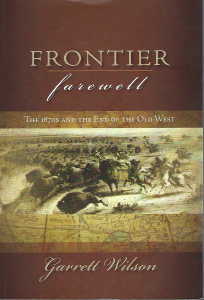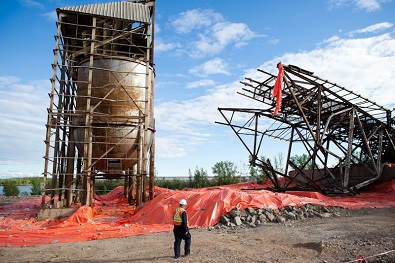
Three paragraphs from Chapter 2 of ‘Frontier Farewell’, The “Medicine Line” explains the climate that I grew up in.
Hundreds of kilometres inland from the ocean’s moderating influence, and behind the barrier of the Rocky Mountains, these northern plains offer another discouraging feature – one of the most extreme climates in the world. Only central Russian has a climate of similar severity. Winters can be despairingly long and bitter; six full months of frost and snow is not rare and temperatures frequently average -25°C or -30°C (-32°F to -35°F) for a full month. Lows of minus -40°C (-40°F) are common. Blizzards howl across the landscape with such ferocity as to suck the breath from one’s lungs and obliterate all visibility. Exposed flesh freezes in minutes and life-threatening conditions can arrive with astonishing speed. In January, 1916, at Browning, Montana, “the mercury dropped from forty-four above to fifty-six below – 100 degrees – in twenty-four hours.” [Ewing] The early-settlers paid dearly, often with their lives, in learning how suddenly, and with what ferocity, a blizzard could strike.
Summer, particularly the months of July and August, provides the other extreme-heat reaching into the 30°C (86°F ) range. Occasionally as high as 40°C or 45°C (104°F to 113°F) has been recorded, accompanied by winds that sear like a blast from a furnace. Plant life withers in such conditions, especially so in the low-precipitation regions of the short-grass prairies where annual rainfall averages only 300 mm (12″). Thunderstorms on the open plains are awe-inspiring and fearsome events, thunder crashing like cannon bursts as lightning splits the sky, all accompanied by torrential rain and often hail that sometimes reaches life threatening dimensions. Flash floods caused by the rain and hail could be dangerous. Rainfall of 375 mm (14.8″) in an eight-hour period has been recorded. The Red River Métis buffalo hunters, experienced as they were in selecting camp sites, sometimes found themselves dangerously close to drowning on the open prairie. Even worse are the tornadoes, funnel clouds spawned by thunderstorms that can rearrange the landscape in mere seconds.
Travellers and early settlers on the Great Plains suffered insects that transcended the merely annoying. Mosquitoes in immense ravenous swarms rendered existence almost intolerable and sleep impossible. Horses were near-maddened by the shining mass clustered about their heads and eyes where the wipe of the rider’s hand came away full of blood and crushed pests. Early waterfowl hunters at Red River found the clouds of mosquitoes so dense as to obscure their aim, making it difficult to see the flights of ducks they targeted.
Yes, it could be cold or hot. Yes, we whined about the weather as they do everywhere. I have experienced flash floods. The mosquitoes were maddening but I never experienced it as explained in the third paragraph quoted above … in Northern Saskatchewan, however … The prairies are open, there are topographically interesting areas. Poor weather was a temporary inconvenience BUT we could just about always do something in it.
REFERENCES
Ewing, Sherm. 1990. The Range. Missoula. MT: Mountain Press, 121.
Wilson, Garrett. 2007. Frontier Farewell: The 1870s and the End of the Old West. Canadian Plains Research Center, University of Regina, 21-22.
